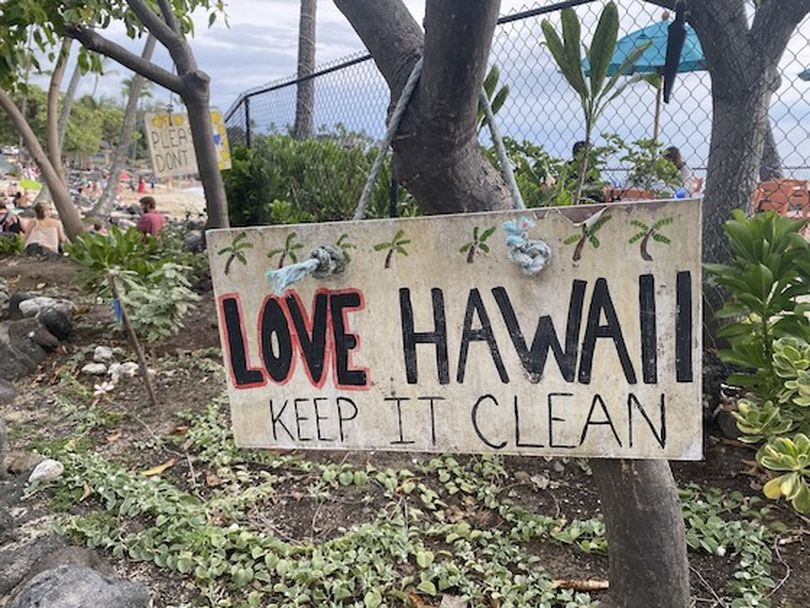Hawaii truly is America’s island paradise

A couple of summers ago my family gathered for a Hawaiian holiday. Since there were six of us – including my daughter, her husband and their two children – we rented a spacious Airbnb near Sunset Beach, on Oahu’s North Shore.
One of the benefits, besides having room for the children to have their own bedrooms, was that the place was within walking distance both of beach access and of Ted’s Bakery. And as amazing as Hawaiian beaches tend to be, Ted’s Bakery is even more of a prize. As Leslie Kelly would say, yummy.
We didn’t just hit the beach, though that was something my daughter’s family – whose home residence is a two bedroom, one-bath co-op apartment in Brooklyn, NYC – tended to do at least once a day. We also toured the rest of Oahu, which to native Hawaiians is known as “the gathering place,” it being the archipelago’s most populous island.
Our trek one day took us to a record shop in Honolulu called Aloha Got Soul, a store that sells a lot of vinyl, much of it capturing music performed by Hawaiian bands. I remember our talking to the local guy working the counter and my telling him, maybe a little too proudly, that I’d visited all the islands.
“All of them?” he said, his smile very nearly a smirk.
“Well,” I replied, knowing what he meant, “all those that a haole can visit.”
“Haole,” of course, is the term that I became all too familiar with during the four years that I lived on Oahu in the late ’50s and early ’60s. It’s a term that the Oxford Dictionary defines as “a person who is not a native Hawaiian, especially a white person.”
It’s also a term that can be used as a withering epithet, often paired with the gerund form of a familiar four-letter adjective, something I first learned on the playground of the elementary school I attended in Wahiawa.
But on that day in Honolulu when I used it, I was just being specific. I’d been to only six of the eight major Hawaiian islands. One – Kaho’olawe – has restricted access for everybody. A former munitions testing area, the island (smallest of the major eight) has unexploded ordnance pretty much all over it.
The other island I’ve yet to visit is Ni’ihau, which also has restricted access. Here’s how one website explains it: “The Robinson family (haoles who bought the island from then-King Kamehameha V) decided to restrict access of Niihau back in 1864, giving it its nickname of the ‘Forbidden Island.’ They put a policy in place to ensure that all those born on Ni’ihau would be able to live there for their entire life with limited exposure to the outside world.”
So no, I haven’t visited either of those islands – nor any of the other 129 islands, some little more than exposed rocks, that the state of Hawaii officially recognizes. But, yeah, I lived on Oahu for four years, I’ve driven the road to Hana on Maui, visited Volcanoes National Park on the Big Island, four-wheeled the length and breadth of Lanai, toured the village of Kalaupapa (formerly the leper colony) on Molokai, and taken a helicopter ride along Kauai’s Nāpali Coast.
I’ve visited Hawaii enough to recall that when I left there following my sophomore year of high school, I left a bit of my heart behind. And that’s why I always love to return, even if so much of the place has changed.
A good example is Ewa Beach. When I lived there, our house sat in a cul-de-sac within walking distance both of the elementary school that my two younger brothers attended. And, during that sophomore year, I was able to talk to my high school, James Campbell High School (named after a 19th-century haole industrialist and developer).
Other than a few neighborhoods and the occasional business, the entire area was mostly as it had been for centuries, its collection of shrubs amid volcanic and marine sediments something we called “the boondocks.” There, too, were the sugar cane fields that were annually burned, filling the air with waves of black smoke that rivaled the clouds of DDT emanating from the trucks that regularly drove past our neighborhood streets.
Now, though, the whole place is one big collection of housing developments, strip malls and golf courses. The house I once lived in still exists, though these days it sits behind a gated entry with a “beware of dog” sign attached to the front. The whole street feels a lot more closed off and far different from the friendly place where our neighbors used to gather and shoot off fireworks every Fourth of July.
That’s to be expected, though. I drive around Spokane and can’t help but comment on how things have changed here over the past four decades. My wife, Mary Pat Treuthart, and I recently took friends to dinner at Masselow’s Steakhouse in the Northern Quest Casino, and I kept commenting on how in the 1980s there was hardly anything in Airway Heights other than a couple of gas stations, a grocery store and a restaurant or two.
But I began this blog post by talking about Hawaii, a place to which we plan on returning. This time our plans are to head back to Maui, which isn’t my favorite island but is a place that we still haven’t fully explored. And among other things, including beach excursions, we hope to help inject some much-needed money into the local economy, which has suffered since the disastrous fire that hit Lahaina in August of 2022.
This is one adjective-free haole who can’t forget all the lessons that the islands taught me, and who is always eager to give something back.
